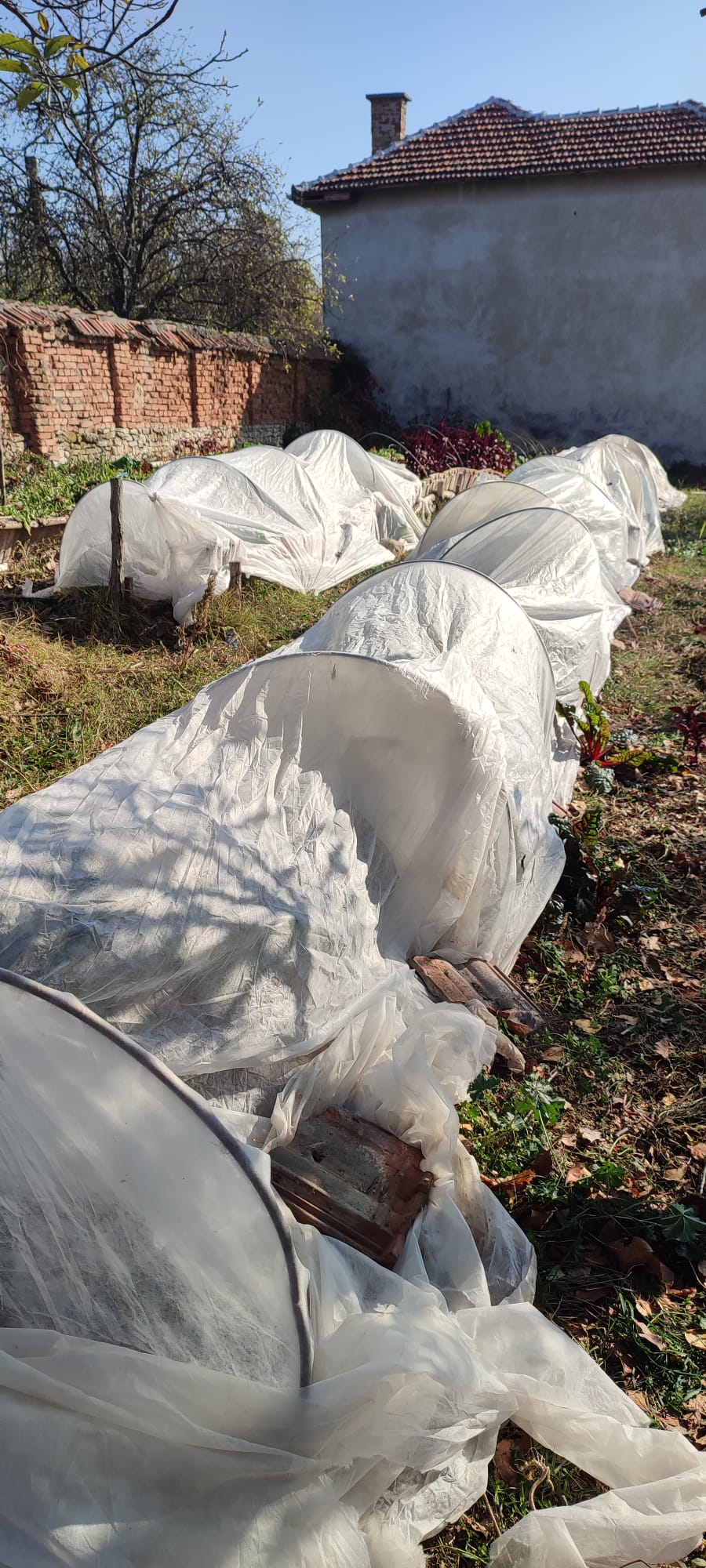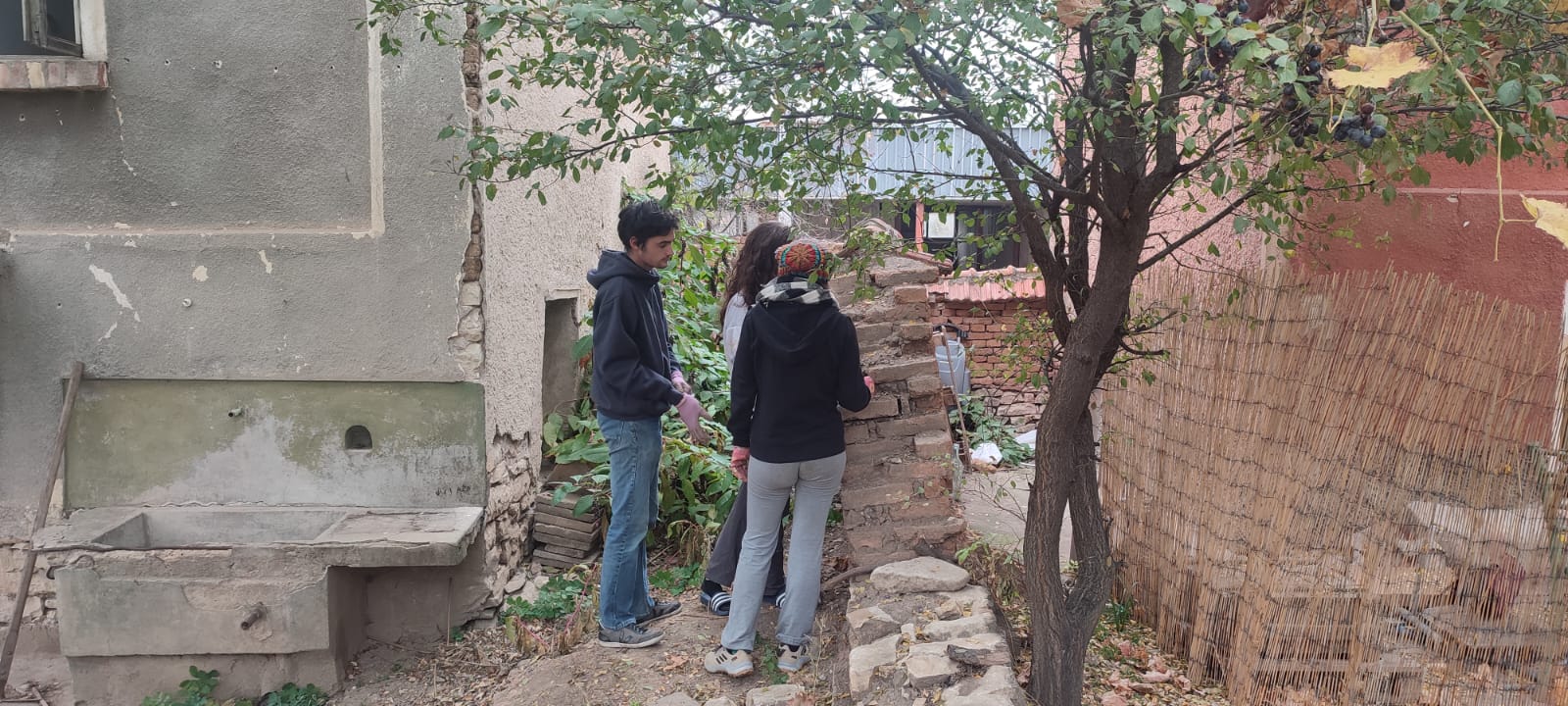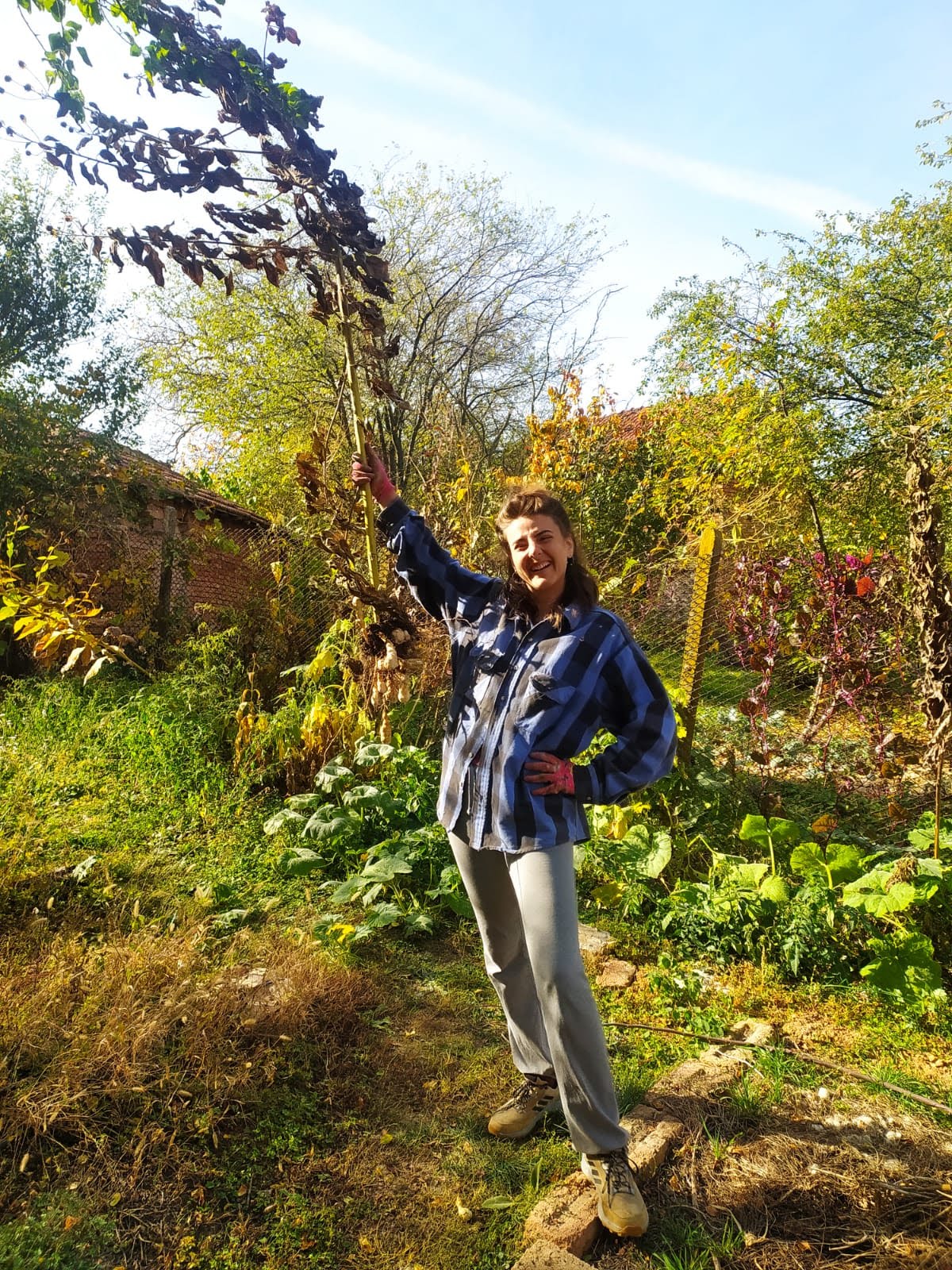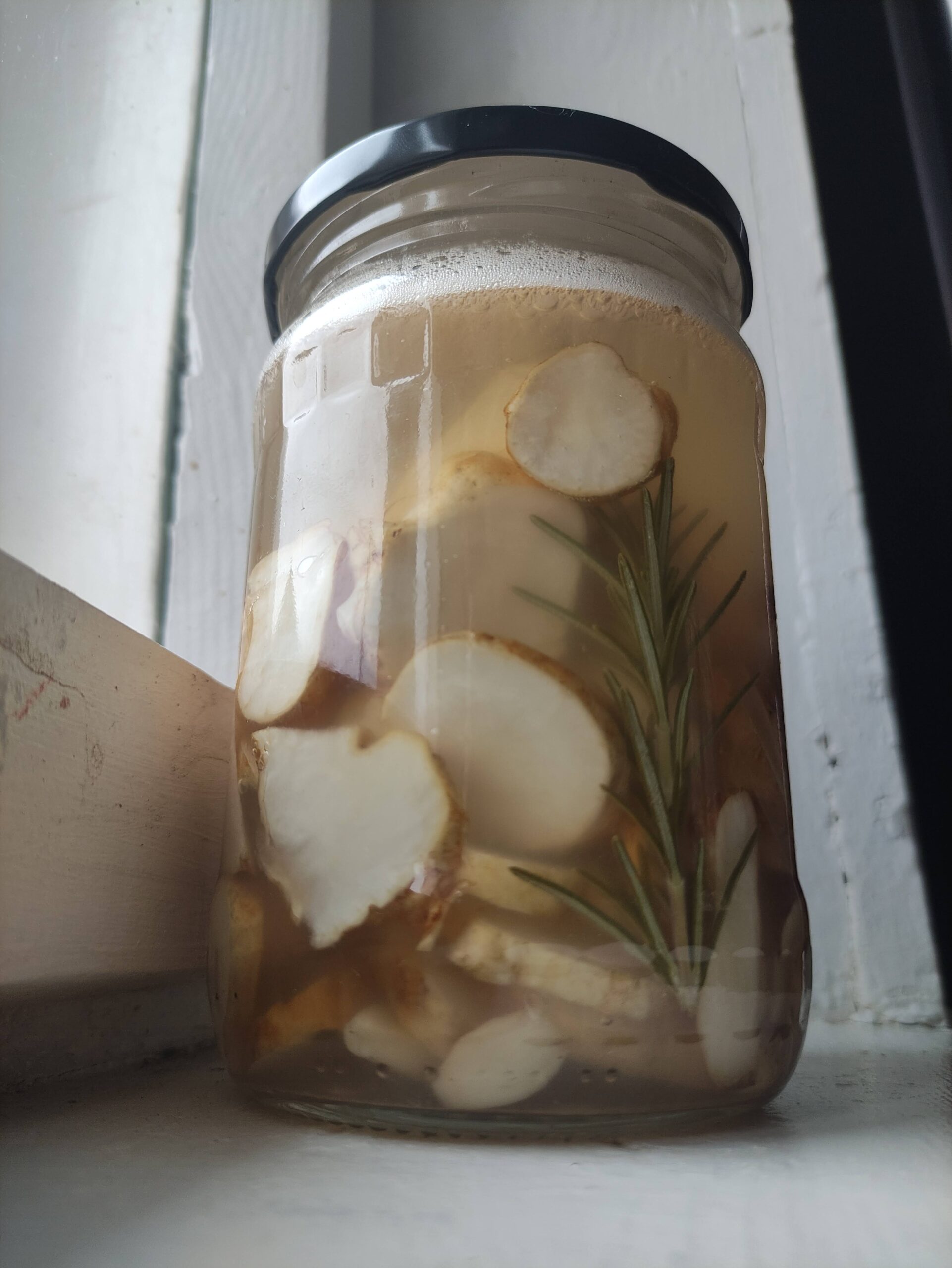François
Hi everyone! Those weeks at Venets, we focused on a very critical task: preparing for winter! ❄️ It is important to do it properly so that crops don’t die because of the cold. Also, you don’t want to let anything grow for several months – because yes, some plants grow in winter.
The first step was to clear beds from all the weeds so that we could sow something else, in our case radish, turnip, and… more Swiss chard (Манголд – Mangold – in Bulgarian).
Because we already have wonderful Swiss chard in the Sunny yard that is not frost-resistant, we covered the concerned rows with fleece cover mounted on plastic arches. Some Swiss chards, however, were not in these rows, and we harvested as much as we could for the veggie boxes. Concerning the Padrón peppers 🌶️, which have the same issue, we just harvested them all, removed the plants from the ground, and placed this latter on the row, like a cover. The green peppers went to the veggie boxes, and we kept the red ones to extract the seeds.
Protecting the Swiss chards in the Sunny yard (photo credit: Vyara Todorsdottir)
The babies are ready for the cold (photo credit: Paula Ochoa Sánchez)
We also did some work in our house garden, where we use a very common technique for winter-gardening: the greenhouse. It was used during summer, but we closed it so that the heat stays as much as possible inside. There we sowed several species of cresson and coriander, that are already growing :’)
But getting the gardens ready for winter would be useless if we were to freeze to death. That is why we need to build a proper heating system for our Todorovo house. Far from wanting to use electricity, or gas, we will be warmed up by… compost! For that occasion, we will be hosting a compost heating workshop next week (more info on that when the time comes, stay tuned 😜). In the meantime, we freed up space for the compost pile next to the house by destroying a wall. Which, already, warmed us up.
Work in progress (photo credit: Vyara Todorsdottir)
Paula
Dear readers,
Among all the tasks we have done during the last few weeks, harvesting topinambur was one of them. It was my first contact with this tuber (it is considered invasive species in Spain) and, as a person that loves nature and cooking, it was fascinating discovering a new product! Native to North America, Helianthus tuberosus is a perennial plant and its tuber is also known as Jerusalem artichokes or sunchokes.
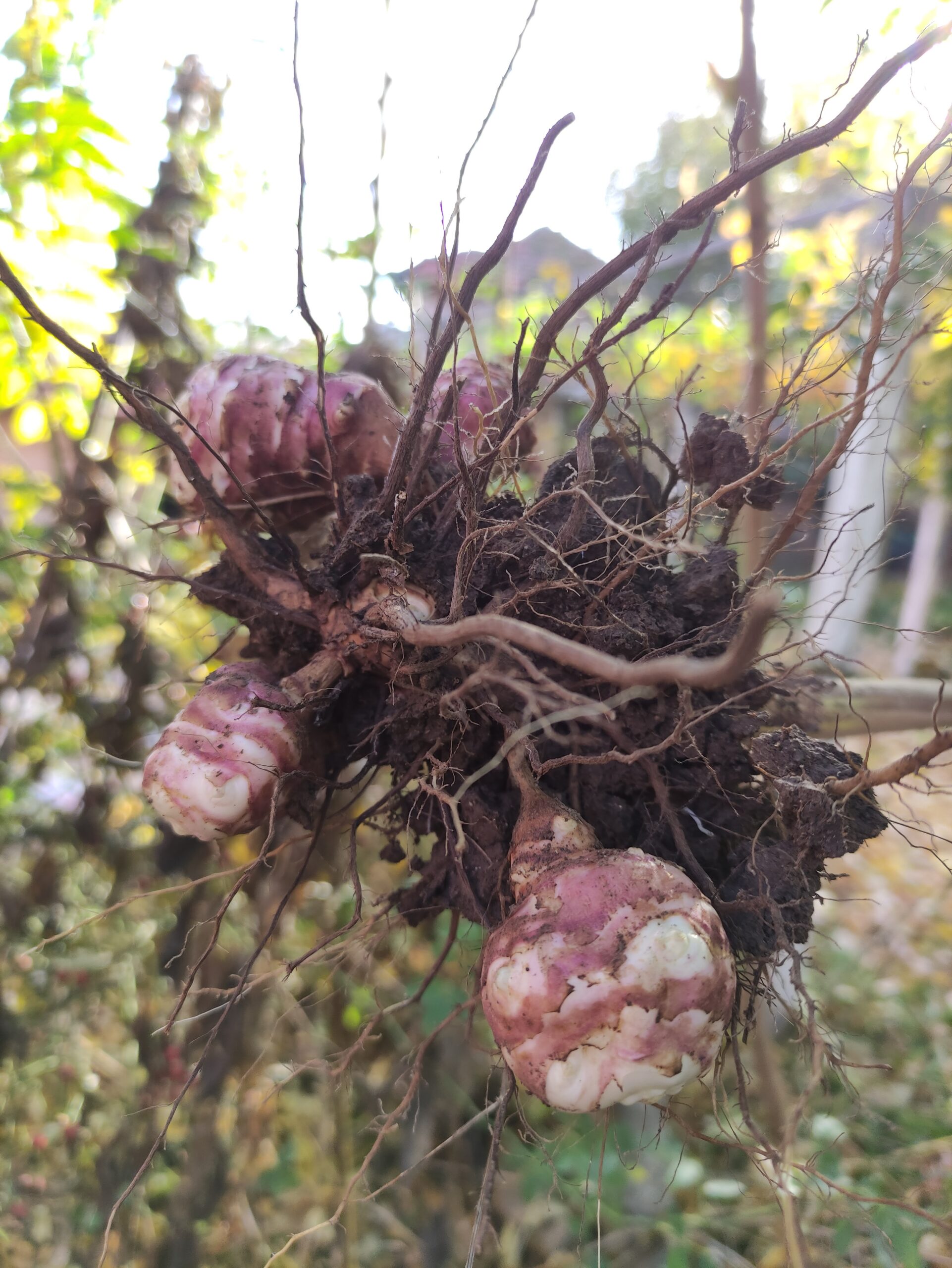
Victorious after pulling up the plant from the roots and discovering the tubers (photo credit: Paula Ochoa Sánchez and Chloé Delbove)
Once topinambur is harvested, it cannot be stored for a long time as it gets soft easily… That’s why, we focused our efforts on ways for preserving it! I will share with you two different recipes that will keep it suitable for consumption after several weeks. However, I must confess that they are great fresh as sticks for hummus and delicious in an apple-carrot-topinambur salad.
- ESCABECHE
Escabeche can be considered as a reverse-marination. The acid bath comes after the main ingredient is cooked. Proportions of the liquid mixed is crucial, being the traditional one 2 parts of olive oil, 1 part of vinegar and 1 part of white wine. My grandmother usually prepares chicken-escabeche and I thought it would be nice to try it with topinambur. Recipe: Fry peeled garlic cloves, carrot and topinambur -plus salt, bay leaf and black pepper grain- in abundant olive oil until softened. Then add the vinegar and white wine making sure all the vegetables are covered and cook medium heat until boiling. Allow to cool, submerged in the liquid, and keep in the fridge.
- BRINE
Our host Catherine told us about this recipe, which just involves salt and water (we decided to add some fresh rosemary too). Disolve 40 grames of salt in 1 liter of water. Clean the topinambur with a brush and add it to a jar in slices. Fill the jar with the brine you prepared before and keep the jar in a cold place. Gently turn it after 3-4 days and wait up to 10 days before consuming.

Evolution of topinambur from soil to plate (photo credit: Paula Ochoa Sánchez)
Renzo & Mali:
Hereby we present you THREE videos that we made during our stay in Vegetarium. The first is Renzo in action, showing how plastic waste is collected and reused at Vegetarium. In the next two videos you will get to know the co-founder Filip Kirilov and his partner Barbara Steinmann, speaking about their passions and inspirations, and how they integrate these in this amazing little community. Enjoy! And thank you so much, Filip and Barbara for receiving us so warmly and inspiring us to the fullest with your pioneering courage in sustainable living and harmonious community-building!
Video 1 – Plastic Waste Collection @Vegetarium:
Video 2 – Interview with Filip Kirilov, co-founder of Vegetarium Project:
Video 3 – Interview with Barbara Steinmann on Conscious Consumption:


